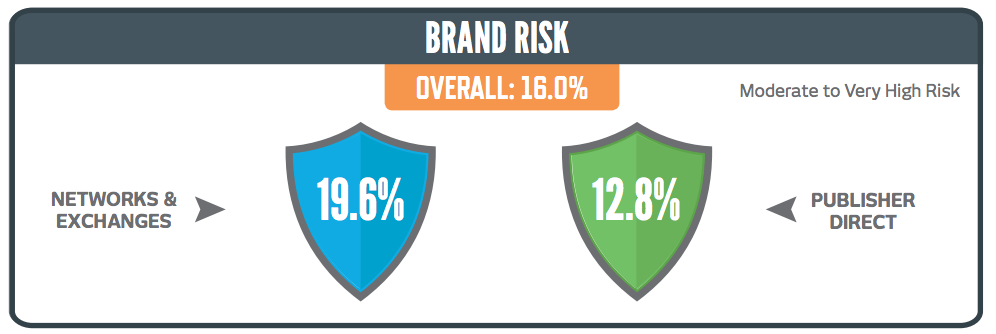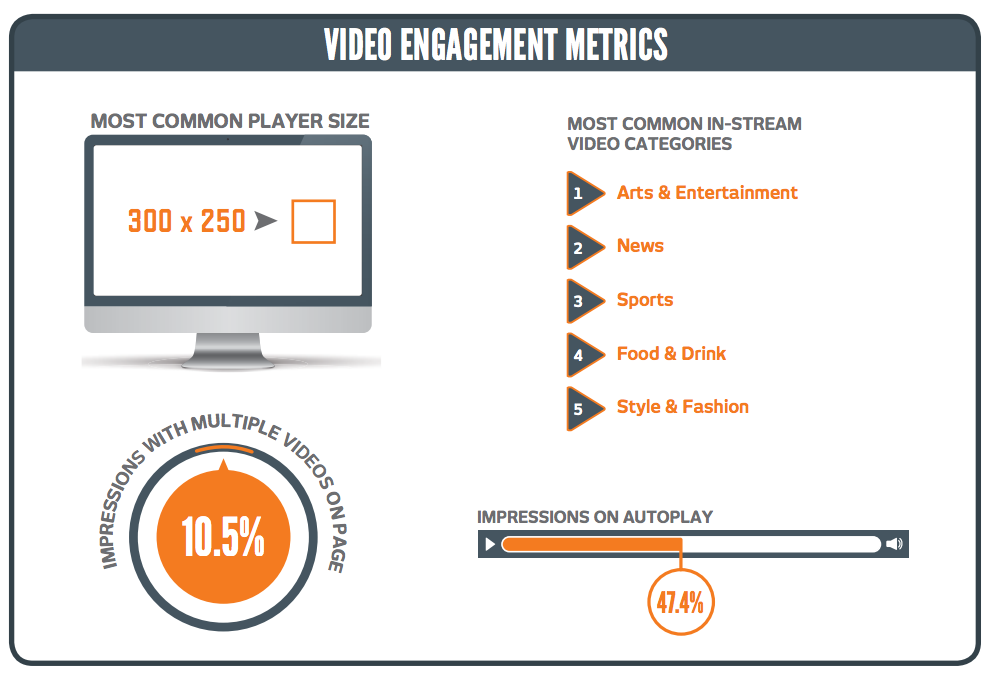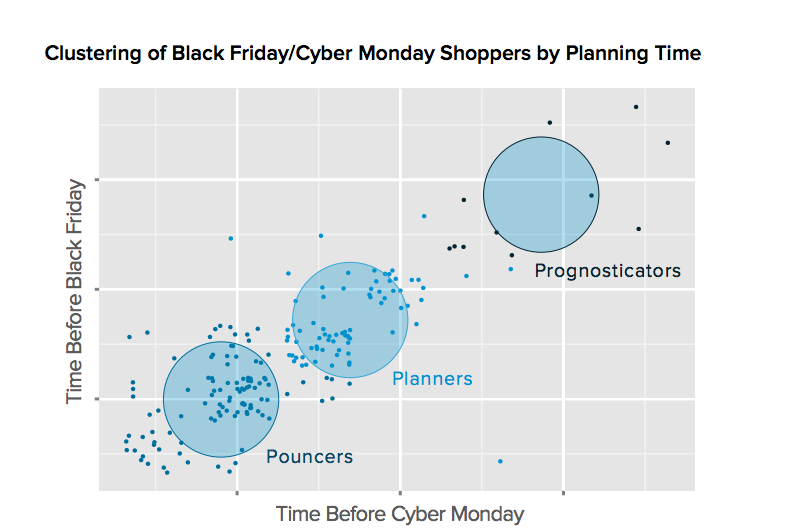State of Video in Europe; Mobile Advertising Soars in Developing Countries
by Rebecca Muir on 19th Nov 2015 in News


ExchangeWire Research’s weekly roundup brings you up-to-date research findings from around the world, with additional insight provided by Rebecca Muir, ExchangeWire, head of research and analysis. In this week’s edition: the state of the European video industry; mobile advertising soars in developing countries; media quality in video remains a challenge in the UK; and fewer than 25% of retail conversions occur on a mobile device.
Released Today: 2015 European State of the Video Industry Report from AOL
Hot on the heels of their sixth US State of the Video Industry report, today (19 November), AOL announced the results from their third annual European report. The report showed that mobile and video are converging, posing new opportunities and challenges to the industry, programmatic is ubiquitous and set to increase and metrics are more important than ever, and broadcast TV budgets are being shifted to digital video activity.
In Western Europe alone, over USD$35bn (€33bn) has been spent on digital advertising this year and this figure is predicted to grow to nearly USD$46bn by 2019.
Mobile video is the strongest growth area, with more than half of buyers planning an increase in mobile video ad spend, but cross-device targeting and attribution/measurement are the key pain points for agencies and advertisers.
Nearly all video buyers (98%) in the European markets surveyed are buying video programmatically, with approximately 40% of their total video budgets being channelled this way. On the sell side, 97% of those surveyed are selling digital video programmatically, with three quarters of those making their premium video inventory available for sale via programmatic buying.
Safety and inventory quality issues are the most frequently cited challenges for programmatic video buyers, with two-in-five citing viewability and fraud scores as vital when measuring campaign performance.
Although TV ad revenues are not declining in Europe, nearly two-thirds of the video buyers (61%) in the survey, who have seen an increase in their digital video budgets, say that broadcast TV budgets are being reallocated to video advertising.
While other branding metrics are becoming increasingly important, CTR is still the most used metric to assess the success of video ad campaigns, ranking higher than other branding metrics, such as impressions, reach, brand uplift, and GRPs.
What’s clear overall is that there are still huge opportunities, and some big challenges to overcome, for both sellers and buyers of digital video.
Click here to read the full report.
Media quality in video advertising remains a challenge for online advertisers in the UK
Integral Ad Science, has released its UK Media Quality Report for Q3 2015. The latest findings show that despite increased investment by the UK’s digital advertising industry and greater consumer consumption of video content, brands still face challenges in viewability, brand safety risk and ad fraud in online video advertising.
In the third-quarter of this year, 54.5% of display ads were not in view, compared to 67.9% of video ad impressions not in view. This shows that there is still much work to be done in both standard display advertising and video advertising to improve viewability.
Video also fares poorly in brand safety risk, which almost doubles, to 16% of video ad impressions having the potential to appear adjacent to inappropriate content, whereas for display brand risk reached 9.1%. Furthermore, the brand safety risk for video ads appearing on networks and exchanges is 19.6%, compared to 12.8% when buying directly from publishers (see below).

Source: Integral Ad Science Media Quality Report, Q3 2015
Additionally, rates of ad fraud in Q3 2015 were slightly higher in video compared to display; fraudulent activity seen in ad impressions reached 10.1% in video and 9.1% in display.
Niall Hogan, UK managing director of Integral Ad Science comments: “Video advertising is one of the fastest growing media channels in the UK, and it’s important that we as an industry continue to tackle issues around viewability, online ad fraud, and brand safety risk. We still have work to do in display advertising, but video has even greater challenges to overcome.”
Finally, the report reveals a positive story when it comes to video ad engagement. The most common player size globally is 300 x 250, whilst not master video size, this is a good size player. Furthermore, less than 11% of impressions occur when there is more than one video impression on the page. Sadly, almost 50% of video ad impressions are still played automatically, which frustrates users. (The full report from Integral Ad Science can be read here.)
Mobile Advertising Soars in Developing Countries
Research released by Smaato last week (11 November) revealed massive growth in Latin America and Asia Pacific. With Venezuela and Indonesia growing by 91% and 84% in the third quarter, respectively. It is predicted that these regions represent the next frontier of mobile advertising for publishers and advertisers alike. These findings are part of Smaato's Q3 2015 Global Trends in Mobile Programmatic Report.
The same report finds mobile users are shifting from the mobile web to apps, with a 6% year-over-year shift in both supply and spend across the platform.
Rapid development of mobile networks, and a proliferation of smartphones, have combined to create a wealth of opportunities for mobile publishers and advertisers in Latin America and Asia Pacific.
“As the world gets more connected, it’s never been more crucial to go global with your mobile advertising strategy”, said Ragnar Kruse, CEO and co-founder of Smaato. “India, with its massive, mobile-first population, has long been considered the ‘next big market.’ While India remains a growing powerhouse, our data also shows that countries like Indonesia and Brazil are up-and-coming markets in Latin America and Asia Pacific – and offer incredible opportunities for publishers to monetise, and for advertisers to connect with consumers.”
Meanwhile, Smaato found that a subtle year-over-year shift in Q3 away from the mobile web in favor of apps. This shift could come as a result of publishers directing users to apps to avoid ad-blocking software, which is primarily a mobile web issue. Smaato’s exchange saw a 6% positive shift in favour of apps in both supply (publisher inventory) and spend (advertiser spend on the Smaato exchange) during the third quarter of 2015, relative to the mobile web.
Additional findings in the report include:
– The operating system with the strongest growth continues to be Android, with supply and spend soaring by a whopping 67% during the third quarter of 2015 from the year before.
– Larger ad formats result in higher eCPMs. While traditional banners (320x50) are still growing, their rate of growth is dropping in favour of larger sizes, like the medium rectangle (300x250) – up 85% – and the interstitial ad (320x480) – which grew 77%.
– Rich media continues to generate higher and higher revenues for publishers and app developers – now generating 116% higher revenues than image-based ads.
(To view the full report click here.)
Fewer than 25% of retail conversions occur on a mobile device
New research from Rocket Fuel has revealed "not all holiday shoppers are created equal". Three distinct groups of shoppers were identified: pouncers, who typically wait until the week (or day) of Black Friday or Cyber Monday to start thinking about or planning their shopping; planners, who start making their plans for Black Friday, Cyber Monday, and holiday shopping one to two months in advance; and prognosticators, or long-term planners, who start their planning three or more months in advance (see below).
Source: Rocket Fuel 2015 Holiday Shopping Study: Influencing Shopper Decisions
This analysis has clear significance for media planners who should be looking at influencing prognosticators 3+ months ahead of the holiday event.
Other findings include:
– Long-term planners spend more than 3x as much as last-minute shoppers.
– 45% of 'Black Friday' shoppers already know what to buy and where before they do their holiday shopping.
– Just under 25% of retail conversions occur on a mobile device; but many customers use multiple devices before the purchase.
– 66% of holiday shoppers think they are more open to online offers and promotions during the holiday season.
(To read the full report click here.)
Ad FraudAd NetworkDisplayMobileProgrammaticTargetingVideoViewability









Follow ExchangeWire